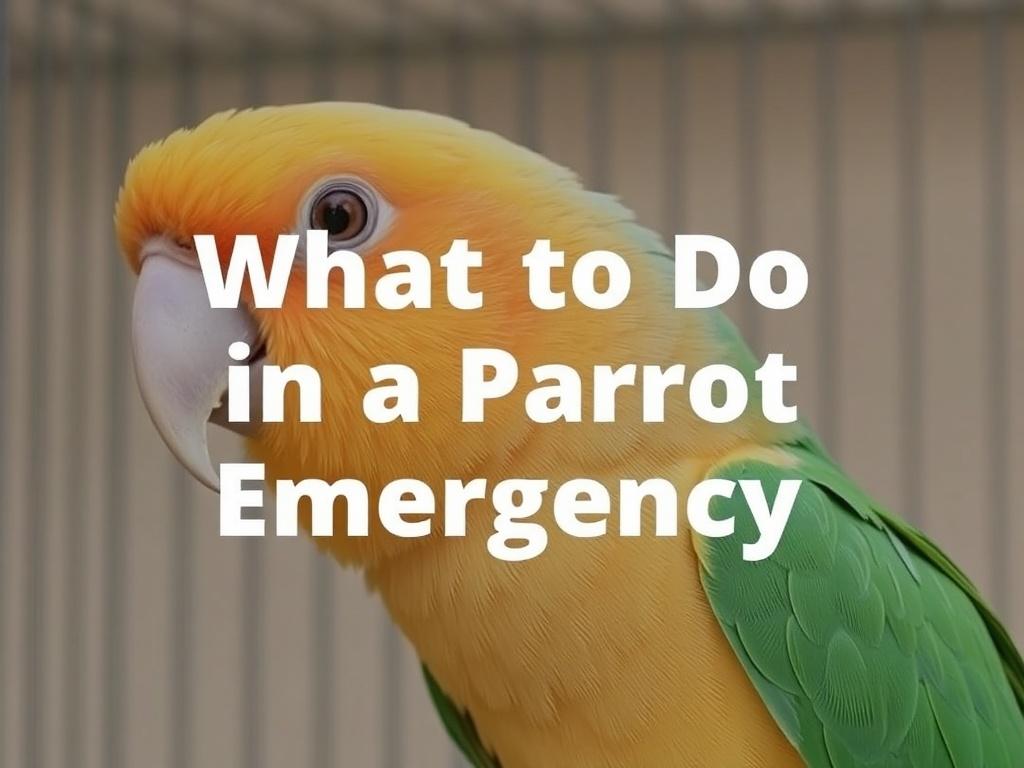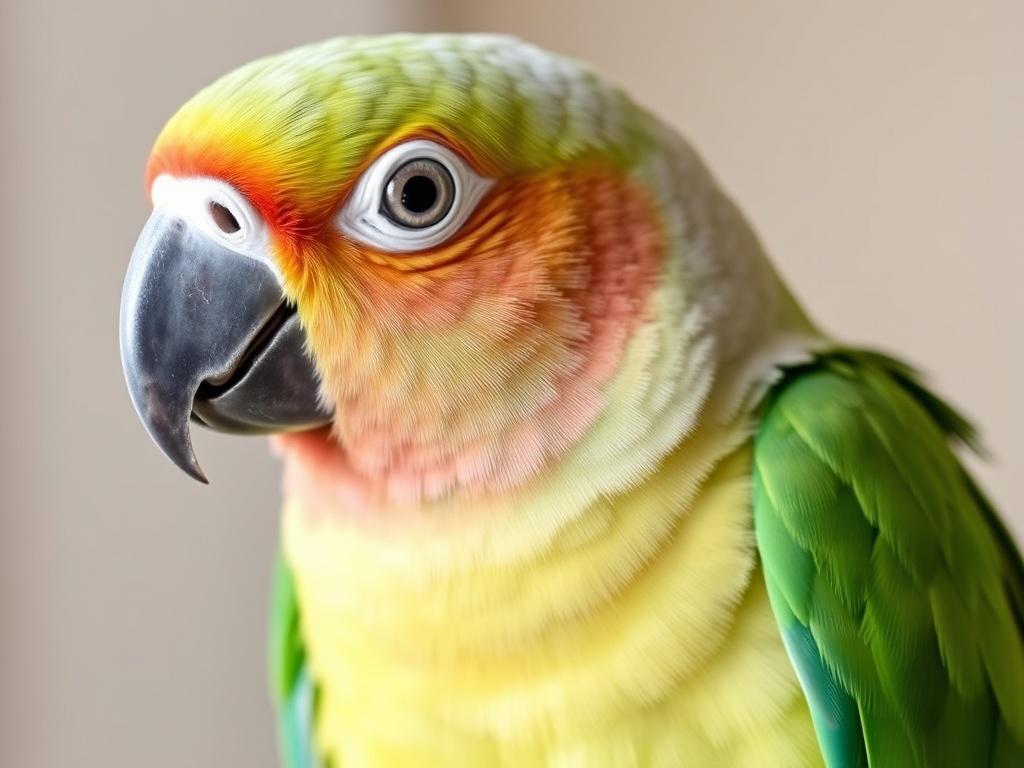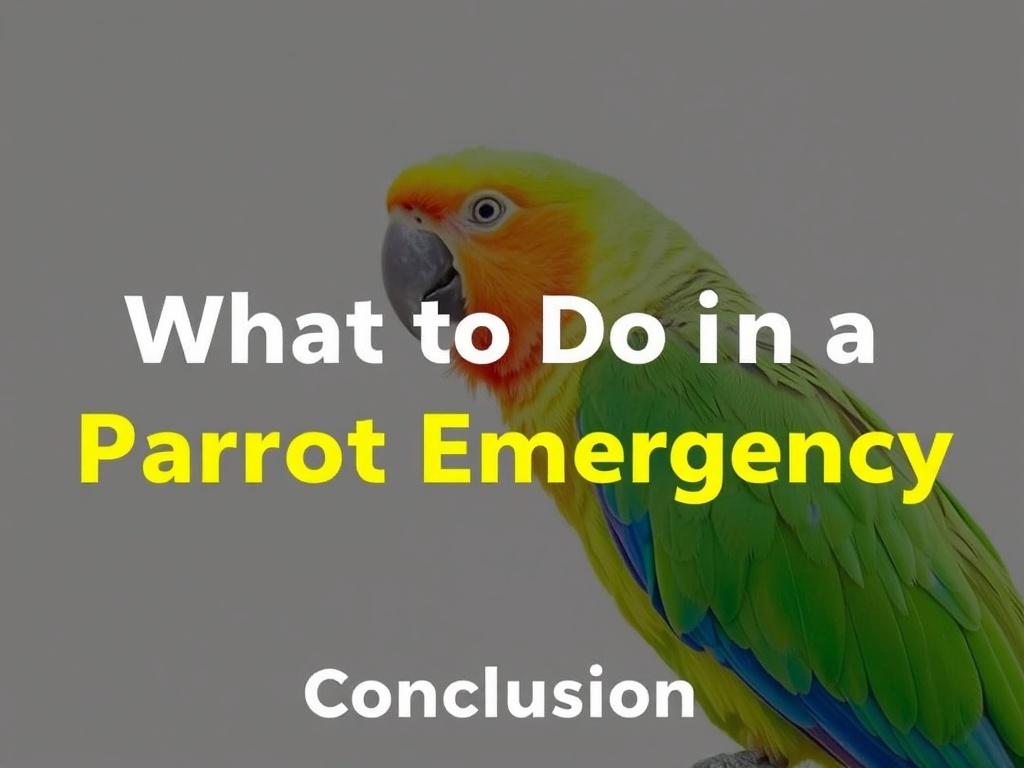Содержание
- Recognizing a Parrot Emergency
- Staying Safe: Your First Actions
- Handling Specific Emergencies
- Creating and Maintaining an Avian Emergency Kit
- Transporting Your Parrot to the Vet
- What to Tell the Vet and What to Bring
- Treatment Expectations and Costs
- Aftercare: Home Recovery and Monitoring
- Prevention: Reducing Future Emergencies
- Common Mistakes to Avoid in an Emergency
- When You Can’t Reach an Avian Vet
- Emotional Considerations: Caring for Yourself During Crisis
- Training and Preparation: Skills Worth Practicing
- When an Emergency Ends: Follow-up and Reflection
- Conclusion
SQLITE NOT INSTALLED
If you’ve ever watched your parrot head-tilt, fluff up, or suddenly go quiet, you know how quickly your stomach can drop. Parrots are charismatic, loud, and full of personality — and when something goes wrong, it can feel urgent, panicked, and bewildering. This article is here to help you slow your breathing, gather your wits, and take clear, practical steps to help your bird survive until a trained avian veterinarian can take over. I’ll walk you through how to recognize true emergencies, immediate actions to stabilize your bird, what to put in an emergency kit, how to transport your parrot safely, and how to prepare for and prevent future crises.
You don’t need to be an expert to act effectively. What you need is a calm approach, a few basic supplies, and the knowledge of when something is beyond home care and requires professional help. Read on, and save this guide — preferably printed and stored near your bird’s cage — so you’re ready if the unthinkable happens.
Recognizing a Parrot Emergency
Not every odd behavior is an emergency, but parrots are masters of hiding illness until they can’t. The difference between a worrisome quirk and something that requires immediate intervention can be subtle. Recognizing key warning signs early gives your bird the best chance of recovery.
Parrots in distress may show obvious or subtle symptoms, and you should take any sudden change seriously. Rapid breathing, closed eyes, severe fluffed feathers, inability to stand or perch, bleeding, open-mouth breathing, repeated regurgitation, stumbling, weakness, seizures, sudden collapse, severe lethargy, or obvious physical trauma are red flags. If you see any of these signs, you should move into emergency action mode.
Common Emergency Signs and What They Might Mean
Parrots are prey species by nature, so they often mask illness. Here are common emergency signs and likely causes:
| Symptom | Possible Causes |
|---|---|
| Open-mouth breathing or tail bobbing | Respiratory distress: inhaled toxins, airway obstruction, pneumonia, heart failure |
| Sudden bleeding | Trauma, broken blood feather, severe injury |
| Collapse, weakness, seizures | Shock, poisoning, hypoglycemia, neurological disease |
| Severe feather loss, skin wounds | Trauma, predator attack, cage accident |
| Sudden fluffed feathers and immobility | Shock, severe illness, extreme pain |
| Regurgitation with weakness | Gastrointestinal obstruction, poisoning |
When to Treat at Home vs. When to Call a Vet Immediately
There are a few minor issues you can monitor at home for a short time (mild feather plucking, small behavioral changes), but the threshold for calling a vet should be low. If the bird is bright, alert, eating, and acting normally — but you notice a small wound or a single dropped feather — you might monitor closely. If the bird is quiet, hiding, not eating, breathing loudly, or shows any signs listed above, call your avian vet immediately. When in doubt, call. A telephone triage with a vet or emergency clinic can save valuable time.
Staying Safe: Your First Actions
Your reactions in the first minutes influence everything that follows. Move calmly but with purpose. A stressed human raises a parrot’s stress levels; a frightened parrot is harder to treat. Protect yourself, protect your bird, and prepare for transport.
Quick checklist for the first 60 seconds
- Assess the scene: Are there hazards (predator, other pets, open windows)? Remove them if safe to do so.
- Secure the bird: Calmly move the parrot to a contained, warm, quiet area using a towel if needed.
- Call ahead: Phone your avian vet or local emergency veterinary hospital to tell them you are coming.
- Gather supplies: Get your emergency kit, towel, carrier, and any relevant items (medication containers, sample vomit/feathers).
- Keep breathing and stay calm: Your bird will pick up your stress, so speak softly and move slowly.
Towel technique — how to safely handle a stressed or injured parrot
Use a soft towel to gently cover the bird and calm it. The towel acts like a swaddle, limiting movement without squeezing. Support the bird’s body and head appropriately. Avoid pressure on the chest — birds need chest movement to breathe. If you must restrain the wings, do so gently and only to prevent further injury. If the bird is injured, keeping movement minimal prevents additional harm.
Handling Specific Emergencies
Different emergencies require different immediate actions. Below are practical, veterinarian-aligned steps you can take while arranging transport to a clinic.
Bleeding
Severe bleeding is frightening but manageable with calm, prompt care. If bleeding is from a cut or from a broken blood feather, follow these steps:
- Apply gentle direct pressure using clean gauze or a towel. Hold steady for several minutes; do not repeatedly lift to check.
- For a broken blood feather (where the shaft is bleeding), do not try to pull it if you are untrained. A feather can be firmly anchored and pulling improperly can worsen bleeding. If you know how and the bird is small, you may be able to pluck the damaged feather quickly, but if there’s doubt, pressure and a swift trip to the vet are best.
- Keep the bird warm and quiet. Place it in a small carrier with a towel to prevent further movement.
- Transport to the vet immediately if bleeding does not stop within a few minutes, or if it is from a large wound or multiple sites.
Fractured wing or leg
Splinting is best left to professionals, but you can stabilize the limb temporarily:
- Minimize movement. Wrap the bird gently in a towel to control wing flapping.
- Support the limb in the position it’s found; don’t try to realign bones.
- For a wing, secure it to the body using soft fabric or gauze as a temporary sling to prevent flapping. Do not bind it too tightly — watch for breathing changes.
- Get to the vet right away; avian fractures need x-rays and proper splinting or surgery.
Respiratory distress
If your parrot is breathing with effort, open-mouthed, or showing tail-bobbing, act quickly:
- Move the bird to fresh air if inhaled toxins or household fumes are suspected.
- Reduce stress and keep the bird upright; do not force water or food.
- Use a humidified environment if possible — a steamy bathroom for a few minutes can help if the issue is mild congestion, but this is not a cure. Avoid overly hot environments.
- Phone the vet and get to the clinic. Respiratory problems can deteriorate fast.
Choking
Choking is terrifying. For parrots, the cause can be lodged food, foreign objects, or swelling. Steps to consider:
- Open the beak gently. If you can see an object and can remove it with tweezers without pushing it deeper, do so carefully.
- For very small birds, finger sweeps can help if you can see and reach the object. Be cautious — pushing too far can force it deeper.
- Do not perform Heimlich maneuvers like you would on a human; those techniques can injure a bird’s fragile body.
- If the bird becomes unresponsive, get to the vet immediately — time is critical.
Seizures and collapse
Seizures are an emergency. Your aim is to protect the bird and avoid injury:
- Place the bird on a soft surface and remove objects that could cause trauma.
- Do not restrain the bird’s body tightly; gentle containment is fine to prevent falls.
- Keep the equipment ready and phone your vet. Note the duration and appearance of the seizure — this information helps diagnosis.
- Bring a fecal sample, vomit, or anything else unusual to the vet for testing.
Poisoning
Quick action matters. Common household toxins include certain foods (avocado, chocolate), heavy metals (lead, zinc), fumes (Teflon/PTFE fumes are catastrophic), and pesticides.
- Remove the bird from the source of exposure immediately and move to fresh air.
- If you can identify the toxin, save the packaging to bring to the vet.
- Flush the bird’s mouth with water if you suspect recent oral exposure, but do not induce vomiting.
- Contact your avian vet or a poison control center and head to the clinic with details of the exposure.
Heatstroke and hypothermia
Birds regulate temperature differently from humans, and extremes can be fatal.
- Heatstroke: Move the bird to a cool, shaded, ventilated area immediately. Offer cool, not icy, water and mist gently. Seek veterinary care.
- Hypothermia: Warm the bird gradually using body heat or a warmed towel. Avoid direct heat sources like heating pads without vet advice because they can create hot spots.
- Either condition requires veterinary assessment to treat internal damage or shock.
Egg-binding (in females)
Egg-binding, when a hen cannot pass an egg, is an emergency. Signs include straining, tail bobbing, depression, and decreased appetite.
- Keep the bird warm and quiet and provide humidity (a steamy bathroom for a few minutes may help temporarily).
- Do not attempt home “popping” or untrained procedures; this can cause rupture or infection.
- Call your vet right away — egg-binding often requires veterinary intervention such as lubrication, oxytocin, or surgery.
Creating and Maintaining an Avian Emergency Kit
A properly stocked kit can be the difference between successful stabilization and frantic improvisation. Keep your kit accessible and check it regularly.
What to include in your parrot emergency kit
| Item | Purpose |
|---|---|
| Soft towels and non-slip material | Wrapping, support, comfort |
| Small animal carrier with towels | Safe transport |
| Sterile gauze, bandages, medical tape | Apply pressure to bleeding wounds |
| Disposable gloves | Protect you and the bird from contamination |
| Scissors and blunt tweezers | Cutting tape, removing visible foreign bodies |
| Tongue depressors or small splint materials | Temporary support for fractured limbs |
| Contact list (avian vet, emergency clinic, poison control) | Immediate communication |
| Notebook and pen | Record symptoms, times, and treatments |
| Flashlight | Inspect wounds and mouth |
| Small syringe (without needle) | Administer water or medications if instructed by vet |
Keeping it ready
Replace expired items, replenish used supplies, and keep your list of phone numbers visible. Practice wrapping a towel and loading the carrier so you can do it quickly under stress.
Transporting Your Parrot to the Vet
Getting your parrot to professional care safely and quickly is the crucial next step. Proper transport protects the bird’s fragile body and keeps you safe.
Preparing for the trip
Before you go:
- Call ahead to alert the clinic and provide details about your bird’s condition so they can prepare.
- Place the bird in a secure carrier lined with a towel or non-slip mat. Keep the carrier covered to reduce visual stress.
- Maintain warmth without overheating. A towel over the carrier is often enough.
- Bring a sample of feces, vomit, any suspect food or material, and any medications or supplements the bird takes.
Safe driving tips
Drive smoothly and avoid sudden stops. Keep the carrier in a secure spot where it won’t slide, and do not leave the bird unattended in a hot car. If possible, have someone accompany you to hold the carrier and monitor the bird’s condition en route.
What to Tell the Vet and What to Bring

Being concise and organized makes triage faster and treatment more effective. Have this information ready before you arrive.
Information your vet will need
- Species, age, weight (estimated if unknown), sex if known
- Detailed description of the event (when symptoms started, how rapidly they progressed)
- Any recent exposures to toxins, new foods, plants, or aerosols
- Current medications and supplements, plus the last time they were given
- Diet details and any recent changes
- Behavior changes and any recent trauma or fights with other pets
Bring these items with you
- Carrier with the bird
- Any suspect objects or food (in a sealed bag)
- Medication bottles and a list of doses
- Veterinary or adoption records, if available
- Payment method and method of contact
Treatment Expectations and Costs

Emergency care often requires diagnostics (x-rays, bloodwork), stabilization (fluids, oxygen, analgesics), and sometimes surgery. Costs vary widely depending on location and the extent of required care. Pet insurance can help with unexpected bills, and many clinics offer payment plans. Ask for an estimate and communicate openly with the vet about options; they can often prioritize interventions and work with you on feasible care paths.
What might happen at the clinic
Upon arrival, your parrot will usually be triaged to assess immediate life-threatening problems. Stabilization (oxygen therapy, warmed fluids, stopping bleeding) comes first. Then diagnostics to identify the root cause. Treatments may include medications, wound care, splinting, or hospitalization for observation.
Aftercare: Home Recovery and Monitoring
Recovery depends on the issue. Even after a successful emergency intervention, your bird needs a calm environment and careful monitoring.
Practical tips for home recovery
- Keep the bird in a quiet, warm cage away from household traffic. Reduce stimulation like loud music or TV.
- Offer easily digestible food and fresh water. If your bird won’t eat, consult the vet — anorexia can be serious.
- Administer medications precisely as prescribed; do not modify doses without consulting your vet.
- Watch for changes: lethargy, refusal to eat, abnormal droppings, labored breathing, or renewed bleeding require immediate re-check.
- Schedule and keep follow-up appointments to assess healing.
Creating a recovery environment
Limit climbing and flying until cleared by the vet. Provide soft perches, easy-to-access food and water, and reduce the cage size temporarily if the bird needs to be less active. Consider a thermal sheet or heating source if warmth was part of stabilization, but always follow vet advice to avoid burns.
Prevention: Reducing Future Emergencies
Prevention is the best medicine. Many emergencies are avoidable with a few consistent habits and environmental safeguards.
Top preventive measures
- Maintain a safe environment: secure windows, keep other pets away unsupervised, and store toxic foods and chemicals out of reach.
- Avoid non-stick cookware overheating. Teflon and similar coatings release fumes that are lethal to birds when overheated.
- Regular vet checkups and routine bloodwork help catch issues early.
- Watch diet: avoid avocado, chocolate, caffeine, alcohol, and high-salt or high-fat human foods.
- Keep heavy metals away: remove batteries, old paint, and inexpensive metal toys that may contain lead or zinc.
- Provide safe toys and rotate them to prevent boredom-induced feather damage or accidental ingestion.
- Train birds to step up and to tolerate being placed in a carrier; this reduces stress during emergencies.
Common Mistakes to Avoid in an Emergency
When adrenaline is high, well-intentioned actions can cause harm. Here are pitfalls to avoid:
- Don’t give human medications without veterinary approval. Many human drugs are toxic to birds.
- Don’t delay calling your vet. Quick triage can be lifesaving.
- Don’t apply tourniquets — they can cause more damage in birds’ tiny limbs.
- Don’t try advanced procedures (like splitting or surgery) at home. Temporary stabilization is fine; diagnosis and treatment belong to professionals.
- Don’t expose the bird to strong scents, smoke, or aerosols on the way to the clinic.
When You Can’t Reach an Avian Vet
Sometimes emergencies happen when offices are closed or you’re far from specialized care. If you can’t reach an avian specialist:
- Call a general emergency veterinary clinic — many handle birds or can stabilize and consult with an avian specialist remotely.
- Contact poison control hotlines if poisoning is suspected — they can provide immediate guidance.
- Use telemedicine: many veterinarians now offer video triage that can be faster than waiting on hold.
- If you must travel far, stabilize as best you can and call the receiving clinic en route so they’re ready upon arrival.
Resources to have handy
| Resource | Why it helps |
|---|---|
| Local avian vet phone | Primary resource for specialized care |
| 24/7 emergency clinic | Immediate stabilization when avian vet is closed |
| Pet poison control number | Quick advice for suspected toxic exposures |
| Bird owner groups or forums | Peer support, but do not substitute for medical advice |
Emotional Considerations: Caring for Yourself During Crisis
An emergency touches both the bird and the human caregiver. Keep in mind that your stress levels affect your bird, and your ability to act depends on self-care.
How to stay calm and effective
- Take one deep breath before approaching your bird. You’ll be surprised how much it steadies you.
- Have a plan and practice it. Even a quick run-through of towel-wrapping and carrier loading will make it easier in a real crisis.
- Call a friend or family member to accompany you; they can drive or hold the carrier while you focus on the bird.
- Allow yourself to feel: it’s normal to be scared. Talking about it afterward helps.
Training and Preparation: Skills Worth Practicing
Some practical skills can make a real difference: towel-swaddling, carrier training, basic first-aid knowledge, and recognizing early signs of illness. Enroll in an avian first-aid class if available, or ask your vet for a demonstration.
Carrier and handling training
Train your parrot to step into a carrier voluntarily through positive reinforcement. This reduces handling stress during emergencies. Reward calm behavior and practice short carrier sessions so the bird associates it with safety.
When an Emergency Ends: Follow-up and Reflection
After an emergency, follow your vet’s instructions closely and reflect on what happened. Consider changes to your home to prevent repeat events. Celebrate the small wins: survival, successful treatment, or even the hard decisions you made under pressure. Keeping a log of the event and recovery can inform future prevention and make future emergencies less overwhelming.
Conclusion

Emergencies with parrots are frightening but manageable when you act calmly, quickly, and knowledgeably. Recognize the warning signs early, keep a well-stocked emergency kit, stabilize your bird gently, and get professional care immediately. Practicing basic handling skills, preparing your home to remove hazards, and maintaining a relationship with an avian vet make the difference between an outcome that’s tragic and one that’s hopeful. Save this guide, assemble your kit, and talk to your vet about specific first-aid steps tailored to your bird’s species and health history — preparation today can save your bird’s life tomorrow.





